This website uses cookies so that we can provide you with the best user experience possible. Cookie information is stored in your browser and performs functions such as recognising you when you return to our website and helping our team to understand which sections of the website you find most interesting and useful.
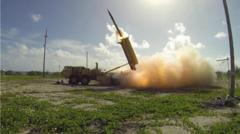
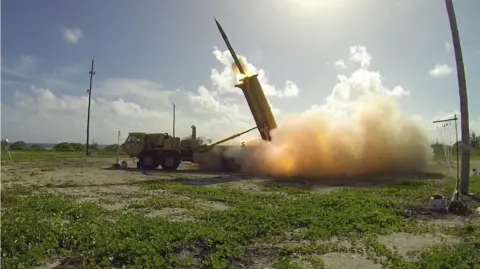 AFP via Getty Images
AFP via Getty ImagesThe Pentagon has confirmed it is sending a high-altitude anti-missile system operated by US troops to Israel.
Officials say the Terminal High-Altitude Area Defense (Thaad) battery will bolster Israeli air defences after Iran’s missile attack on the country earlier this month.
President Joe Biden has said it is meant "to defend Israel", which is still expected to retaliate against an Iranian strike involving more than 180 ballistic missiles fired at Israel on 1 October.
The move has become the focus of attention as it involves putting American boots on the ground in Israel.
There are already a small number of US forces in the country - but this new deployment of about 100 troops is significant as it signals further US entanglement in the expanding regional war.
It is also being scoured for clues as to what it means about the effectiveness of Israel’s missile defences as the crisis grows.
Israel has yet to launch its retaliation for Iran’s attack, which will be "lethal, precise and above all, surprising" according to Defence Minister Yoav Gallant.
Tehran said it fired on Israel because it assassinated Hassan Nasrallah, the leader of Iranian-backed Hezbollah, in Beirut.
The Pentagon said an advance team and components needed for the battery arrived in Israel on Monday – with further personnel and parts to follow in the coming days. The battery will be operational in the “near future”, a statement said.
Israeli journalist Avi Scharf, who routinely monitors flight tracking data, said two C-17 US military transporters flew from Alabama to the Israeli Air Force's Nevatim base overnight, likely carrying Thaad equipment.
It’s still unclear whether the Thaad deployment is part of US contingency planning to bridge gaps identified in Israel’s aerial defences, or whether it points to growing concerns in Washington of a more forceful Israeli strike on Iran.
President Biden has opposed any attack on Iranian nuclear facilities, as well as on its oil or energy infrastructure, amid fears that it would trigger a spiralling conflict and affect the global economy.
Whatever the background to the decision, it signals a further need by Israel for US defence assistance amid the expanding Middle East war.
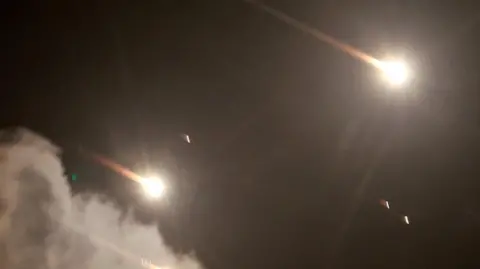 Reuters
ReutersBallistic missiles like the Fattah-1used by Iran earlier this month are fired upwards into the Earth’s atmosphere, where they change trajectory and descend towards their target. One of their military advantages is their immense speed compared with cruise missiles or drones.
The Thaad system is highly effective against ballistic missiles, according to manufacturer Lockheed Martin, the biggest US arms maker.
Raytheon, another American weapons firm, builds its advanced radar.
The system counts six truck-mounted launchers, with eight interceptors on each launcher. It costs about $1bn (£766m) a battery and requires a crew of about 100 to operate it.
Thaad is much sought after including by Ukraine to counter Russian missile attacks.
Saudi Arabia has orders in for it, and reportedly wanted more as part of an American weapons bonanza in return for officially recognising Israel: a so-called "normalisation" deal which was largely derailed after the 7 October attack by Hamas.
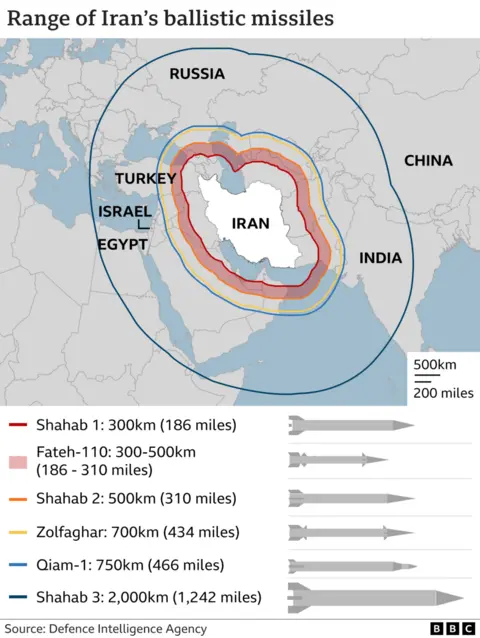
Iran’s 1 October strikes on Israel killed one man in Jericho in the occupied West Bank, who was hit by part of a missile that was apparently shot down.
Israel has a much vaunted aerial defence system, developed with the US, including Arrow 2 and Arrow 3 exo-atmospheric missiles.
These fly at hypersonic speed and can shoot down ballistic missiles in space. The system’s Israeli designers said Arrow "performed as expected" with "wonderful" results against the Iranian strike.
The US supported the defensive operation, firing interceptors from two naval destroyers in the eastern Mediterranean, alongside support from some European and Arab countries.
Washington presented the Iranian strike as "defeated and ineffective".
But damage on the ground told a less emphatic picture. Satellite images showed damage at the Nevatim base, which houses F-35 fighter planes, including craters on a runway and taxiway.
Decker Eveleth from the Washington-based Center for Naval Analyses (CNA) said the images showed 32 impact points, including multiple hits in the area of F-35 hangers.
"Some F-35s got really lucky," Mr Eveleth posted on X.
The Israeli newspaper Haaretz reported that it was still unclear whether damage was caused directly by missiles or interception shrapnel.
There were other direct impacts, including in Tel Aviv. One missile reportedly blew a 30ft (nine metre) deep crater in a densely populated area close to the headquarters of Mossad, Israel’s spy agency.
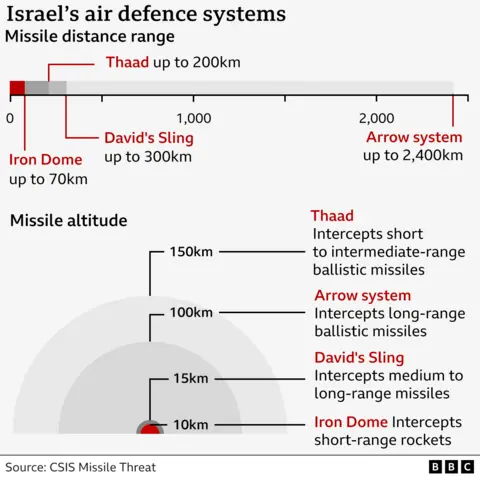
Politically, the Thaad announcement is couched in terms of the Biden administration’s "ironclad" support for Israel’s defence.
The US has sent more than 50,000 tonnes worth of weapons to Israel in the last year, according to Israeli figures.
But it also highlights some of the policy contortions carried out by Washington: first trying to pressure Israel and its adversaries not to escalate the war, instead urging diplomacy.
When that has failed the White House has then firmly backed its Israeli ally’s decisions while moving to shield it diplomatically and militarily.
The Iranian missile strikes followed Israel’s assassinations of Hamas political leader Ismail Haniyeh (a negotiator in the Gaza ceasefire and hostage release talks), Hassan Nasrallah in Beirut, Israeli air strikes in densely populated parts of Beirut and its ground invasion of Lebanon.
Israel said it has been striking against Hezbollah’s leadership and destroying its vast missile stores due to 11 months of cross-border rocket fire into Israel.
It argues only military pressure and degrading Hezbollah’s capabilities will ensure 60,000 Israelis can return to their homes in northern Israel.
The Pentagon describes the Thaad deployment as part of "the broader adjustments the US military has made in recent months" to support Israel and defend American personnel from attacks by Iran and Iranian-backed groups.
It says a Thaad was deployed in southern Israel for an exercise in 2019, the last and only time it was known to be there.
A US military deployment to Israel outside of drills is extremely rare, given Israel's own capabilities.
Iranian Foreign Minister Abbas Araqchi warned on Sunday that the US was putting the lives of its troops "at risk by deploying them to operate US missile systems in Israel".



 Africana55 Radio
Africana55 Radio 

